#June 27 1912
Text
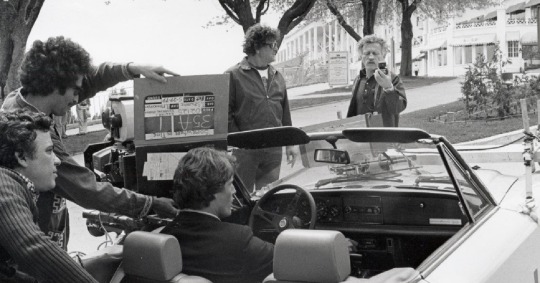

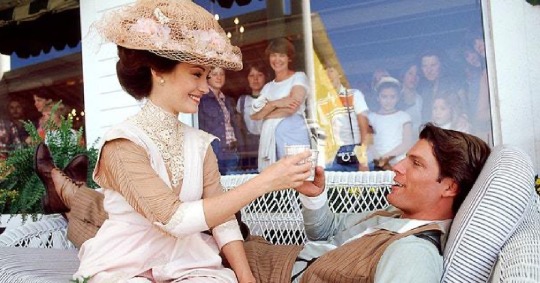
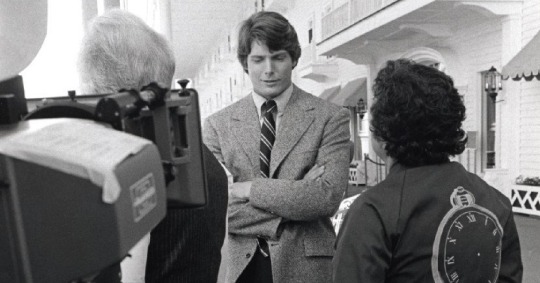
On this day, June 27, 1912, Richard Collier, played by Christopher Reeve, traveled back in time to find his true love, Elise McKenna, played by Jane Seymour, in the 1980 movie, Somewhere in Time.
“It is June 27, 1912. You are lying in your bed in the Grand Hotel and it is 6 p.m. on the evening of June 27, 1912...You have traveled back in time, soon you will open your eyes. You will walk into the corridor, and you will go downstairs and you will find Elise McKenna, who is in this hotel at this very moment.”
Filmed at Grand Hotel in 1979, Somewhere in Time continues to be a beloved classic for those searching for old-world charm and whimsical adventures that transcend time. ✨
(via the Grand Hotel Michigan Instagram)
June 27, 2023
78 notes
·
View notes
Photo

On this day, 27 June 1880, disabled American author, socialist, and lecturer, Helen Keller was born in Tuscumbia, Alabama. Keller is famous for being the first deafblind person to receive a bachelor's degree. However, often omitted from mainstream accounts of her life is the fact that she was a revolutionary socialist. She joined the Socialist Party of America and supported workers during the Bread and Roses strike in Lawrence, Massachusetts in 1912. Keller subsequently became a member the Industrial Workers of the World (IWW) union, telling the New York Tribune: "I found out the Socialist party was too slow. It is sinking into the political bog. It is almost, if not quite, impossible for the party to keep its revolutionary character so long as it occupies a place under the government and seeks office under it. The government does not stand for the interests the Socialist party is supposed to represent… The true task is to unite and organise all workers on an economic basis, and it is the workers themselves who must secure freedom for themselves, who must grow strong… Nothing can be gained by political action. That is why I became an IWW." Helen Keller continues to be an inspiration for many disabled and non-disabled people around the world. Learn more about women in the IWW in our podcast episode 16, available wherever you get your podcasts or on our website: https://workingclasshistory.com/podcast/e16-women-in-the-early-iww/ https://www.facebook.com/photo.php?fbid=651564333683452&set=a.602588028581083&type=3
272 notes
·
View notes
Text

Robert Wynn-Carington, Viscount Wendover by Philip de Laszlo 1911
Style note: out of the darkness into some colour
“Albert Edward Samuel Charles Robert Carington, known as Robert, was born on 24 April 1895, at 50 Grovesnor Street in London. He was the sixth child and only son of Charles Carington, then Baron Carrington, and his wife the Hon. Cecilia Margaret Harbord. A close friend of Robert’s father, the Prince of Wales, was his sponsor at his christening on 5 June 1895 at Wycombe Parish Church. On 16 July that year, Charles Carington was created 1st Earl Carrington, and Robert Viscount Wendover. He retained this title even after his father was created Marquess of Lincolnshire in 1912.
Wendover attended Eton College from 1908 until 1912. Following in his father’s footsteps, he joined the Royal Horse Guards and gained the rank of Lieutenant. It was as a subaltern, in the Charge of the Blues 10th Hussars and Essex Yeomanry, that he died from wounds received in action near Ypres on 13 May 1915. He died in hospital in Boulogne on 19 May, his parents at his bedside. On 27 May a Greek verse, In Memoriam, was published in The Eton College Chronicle. His parents repatriated his body for the funeral, which took place at Moulsoe, Buckinghamshire, with full military honours. He was buried in St Mary’s Churchyard, Moulsoe.
This portrait was painted in September 1911 in the dining room at Daws Hill, the Carringtons’ family home on the Wycombe Abbey Estate in Buckinghamshire. De László had painted the sitter’s sister Myee, Viscountess Bury, in July that year, which may have been a catalyst for this commission.
11 notes
·
View notes
Text
NEPTUNE-PLUTO UNDERWATER HELLSCAPE: TITANIC, THE TITAN SUB, JAMES CAMERON AND HOW THEY'RE ALL CONNECTED
If you're somehow not up to date, during this past week, all media was flooded with news coverage about the missing submarine (or, rather, a submersible... or rather, a big feeble can that didn't really quite get any certification to officially function) that was supposed to take a trip 3700 meters down the ocean to see the Titanic's wreck.
Well, four days later and it was stated the sub imploded.
Also, everything Titanic-related is back on everyone's lips. And so is James Cameron. It shouldn't be a surprise, yet it's still pretty eerie, all these things are connected astrologically-speaking.
But let's take it back to the beginning.
Titanic's sinking
Titanic sank during the night from April 14th to 15th 1912 just two days before a solar eclipse at 27° Aries that was square Neptune in Cancer. It was also almost Mercury cazimi during its retrograde phase. So not only we had a moment of big things that bring a darkening of some sorts or a purge (eclipse), it was also tightly paired with a retrograde Mercury, which usually warns of travel issues and a square from Neptune - which can mean things unseen and fogginess. Neptune was also in Cancer, which is obviously a water sign - and we're met with an iceberg that pops up out of nowhere in the fog, while we're charging Aries-style full speed ahead - all that despite receiving multiple warnings of sea ice ahead of the ship - warnings that somehow never reached the ship's bridge.
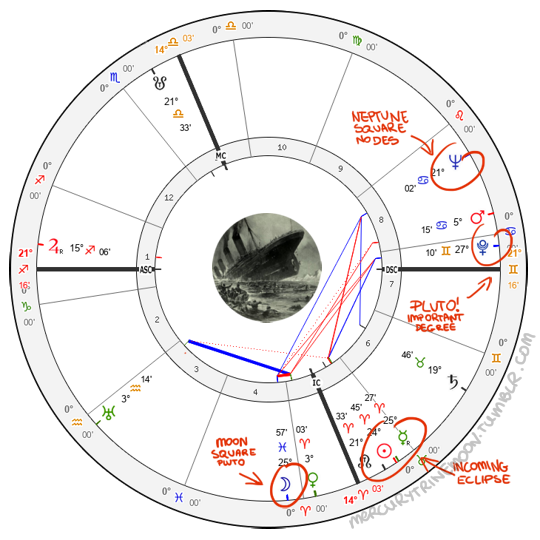
The cherry on top is Moon in Pisces (again, in a water sign) squaring Pluto in Gemini at 27°. Now remember those degrees cause they are going to pop up again later on.
We can also point to an exiled Venus in Aries applying to a square with a fallen Mars in Cancer - and keep in mind that watery Mars was the dispositor of the eclipse. I also sometimes like to look at quincunxes cause they often bring an unpleasant and uncomfortable situations that sneak up on you out of nowhere. So let's also point out the Mars-Uranus quincunx that was happening at that time. A bizzare case of severing that is.
James Cameron and his fascination with the Titanic
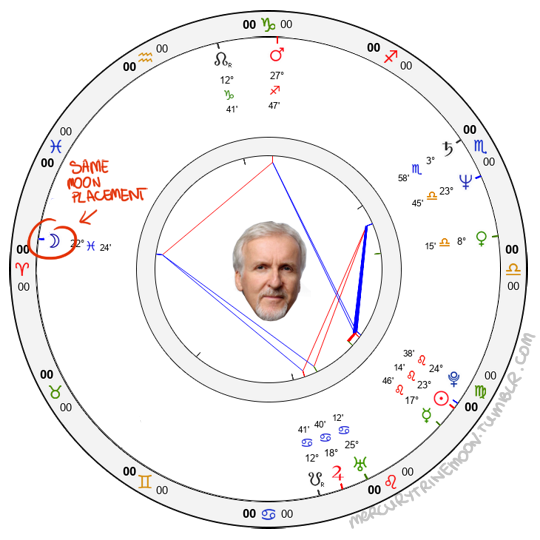
I'm sad to say James' chart is untimed so we can't really dissect it but let's just take a quick glance.
He is a Leo Sun conjunct Mercury and Pluto in sextile with Neptune, which talks about his love for grandiose and cinematography but also about how detailed in his work he is. That love for detail has more of an element of deep exploration - figuratively, through world-building but also literally through scientific expeditions. Pluto's influence makes him really put things under the microscope and treating it surgical precision.
But what I really like in his chart is his Moon-Jupiter mutual reception that actually forms a trine (unfortunately we don't know the exact orb). That is just a VERY good aspect to have and one that not only can bring popularity but one that makes the person dream BIG. Now, his Moon is somewhere in the 3rd decan of Pisces - remember it's the exact same Moon position as Titanic's catastrophy (deep connection with Titanic's story). His Jupiter, on the other hand, is just 3° away from where Neptune was in April of 1912 (learning about and exploring the underwater mystery of Titanic).
On top of that his curious Sagittarius Mars is opposite Titanic's Pluto at, surprise, surprise, 27°.
New Moon summoning Pluto's ghost

(Time set for the supposed submergence at 8am, Titanic wreck's coordinates)
So let's get to that poor Titan.
Titan started its dive the Sunday morning of June 18th. If you track transits or, at least, the Moon cycle, you may recall a New Moon took place that exact Sunday morning. New Moon that squared Pisces Neptune at 27°. It also made a 3° quincunx to Pluto, which just barely moved back into Capricorn.
Now remember the degrees from Titanic's sinking? Pluto was at 27° of Gemini - the New Moon happened at 26° of Gemini. The Titanic's Moon was at roughly 25° Pisces - current degree of Neptune is 27 Pisces. Interestingly, Neptune would oscillate around that degree for a couple of years now - exactly since OceanGate started their expeditions - they tried to get to the heart (Moon) of Titanic's wreck but were doing it in an unsafe way, teetering somewhere on the edge of it being illegal (Neptune).
You'd think some of the malefics (or both!) should be present when it comes to tragedies like these, but instead we get Pluto and Neptune, which makes sense. Pluto is obviously death and destruction but is also the underworld, the depth (not just metaphorical) - mix it with the literal element of the Neptunian waters - the ocean - and the unknown, the mystery, the overlooked weak details and faults - and we get a bizzare accident in the deep seas.
Saturn in Pisces and death in the water
I also quickly glanced at the chart of one of the passengers, Hamish Harding, and coudn't help but notice he was just going through his Saturn return in watery Pisces. Not only that but that Saturn was natally squared by Gemini Mars with just around a 0°05’ orb.
Saturn is death, restrain, depression, rigid environment and again, Pisces is a water sign. Mars brings suddenness, violence, cutting, explosions (paired with the pressure of Saturn - an implosion, actually). It being in Gemini, it's travel and exploration. A very violent and gruesome aspect, he probably would hurt himself somehow sooner or later (IF he didn't already in the past).
(Of course, remember that just because you have a tense Mars-Saturn aspect doesn't mean you'll die a violent death or anything. But DO be careful. Nevertheless this is great empirical study).
He did seem to have a heart of an adventurer and an explorer, with Moon in the last decan of Sagittarius* as well as Venus and Mercury* late in Gemini (not exactly 27° but very close to that). Unfortunately the New Moon that happened on these points in his chart, paired with it happening on the Pluto degree from Titanic's sinking, has resulted in a tragedy.
*there's a tiny chance his Moon could as well be at 0° Capricorn and Mercury at 0° Cancer, just to be clear. But I do think they were probably at the Sag-Gemini axis. If his Moon was around the 27°, it'd be almost creepy
#astrology#mercurytrinemoon#astrology notes#astro notes#natal chart#titanic#mundane astrology#james cameron
38 notes
·
View notes
Text
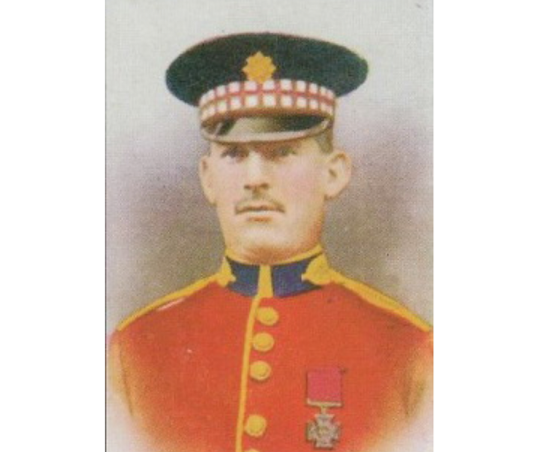


On 2nd April 1889, James MacKenzie was born.
Mackenzie was born at West Glen, New Abbey, Kirkcudbrightshire on 2nd April 18849. His father was Alexander McCortie Mackenzie, a mason. His mother was Marion Carnduff nee Millar. Alexander and Marion had married on 8th June 1883 in West Glen. The family moved to Maxwelltown when James was young. He had a brother and six sisters.
James was educated at Maxwelltown School and after school was employed at Locharbank Farm at Bank End, on his maternal grandparents farm at Barncleugh, Irongray and later as a joiner with Messrs Williamson in Maxwelltown.
When he enlisted on 16th February 1912, he gave his age as 23 although he was 27, to ensure he got in, and gave his occupation as a groom. He went to France with his unit, the 2nd Battalion, Scots Guards, arriving on 7th October 1914.
On 19th December 1914 at Rouges Blancs, France, Private MacKenzie rescued a severely wounded man from the front of the German trenches under a very heavy fire and after a stretcher party had been compelled to abandon the attempt. Private MacKenzie was killed later on that day while trying to carry out a similar act.
Sadly, Mackenzie’s body was not recovered following the action at Rouges Blancs, and he is commemorated on the Ploegsteert Memorial, Belgium. James had never married and the VC was sent to his mother on 9th March 1915. In addition to his VC, he was awarded the 1914 Star with Mons clasp, British War Medal 1914-20 and Victory Medal 1914-19. His mother later presented his medals to the Scots Guards Regiment and they are held by the Regimental HQ, Scots Guards, Wellington Barracks, London.
A memorial stone was laid in Maxwelltown in December 19th 2014 to commemorate Private MacKenzie by Dumfries and Galloway County Council.
9 notes
·
View notes
Text
Today the Church remembers the 108 Blessed Polish Martyrs.
Orate pro nobis.
The 108 Blessed Polish Martyrs were Roman Catholic Christians in Poland killed during World War II by the Nazis, either in the concentration camps or by mass slaughter on the streets. The group comprises 3 bishops, 79 priests, 7 male religious, 8 female religious, and 11 lay people. There are two parishes named for the 108 Martyrs of World War II in Powiercie in Koło County, and in Malbork, Poland.
The 108 Blessed Martyrs were beatified on 13 June 1999 by Pope John Paul II in Warsaw, Poland.
List of Martyrs
Bishops
1. Antoni Julian Nowowiejski (1858–1941 KL Soldau), bishop
2. Leon Wetmański (1886–1941 KL Soldau), bishop
3. Władysław Goral (1898–1945 KL Sachsenhausen), bishop
Priests
1. Adam Bargielski, priest from Myszyniec (1903–1942 KZ Dachau)
2. Aleksy Sobaszek, priest (1895–1942 KL Dachau)
3. Alfons Maria Mazurek, Carmelite friar, prior, priest (1891–1944, shot by the Gestapo)
4. Alojzy Liguda, Society of the Divine Word, priest (1898–1942 KL Dachau)
5. Anastazy Jakub Pankiewicz, Franciscan friar, priest (1882–1942 KL Dachau)
6. Anicet Kopliński, Capuchin friar, priest in Warsaw (1875–1941)
7. Antoni Beszta-Borowski, priest, dean of Bielsk Podlaski (1880–1943, shot near Bielsk Podlaski)
8. Antoni Leszczewicz, Marian Father, priest (1890–1943, burnt to death in Rosica, Belarus)
9. Antoni Rewera, priest, dean of the Cathedral Chapter in Sandomierz (1869–1942 KL Dachau)
10. Antoni Świadek, priest from Bydgoszcz (1909–1945 KL Dachau)
11. Antoni Zawistowski, priest (1882–1942 KL Dachau)
12. Bolesław Strzelecki, priest (1896–1941 KL Auschwitz)
13. Bronisław Komorowski, priest (1889–22 March 1940 KL Stutthof)
14. Dominik Jędrzejewski, priest (1886–1942 KL Dachau)
15. Edward Detkens, priest (1885–1942 KL Dachau)
16. Edward Grzymała, priest (1906–1942 KL Dachau)
17. Emil Szramek, priest (1887–1942 KL Dachau)
18. Fidelis Chojnacki, Capuchin friar, priest (1906–1942, KL Dachau)
19. Florian Stępniak, Capuchin friar, priest (1912–1942 KL Dachau)
20. Franciszek Dachtera, priest (1910–23 August 1942 KL Dachau)
21. Franciszek Drzewiecki, Orionine Father, priest (1908–1942 KL Dachau); from Zduny, he was condemned to heavy work in the plantation of Dachau. While he was bending over tilling the soil, he adored the consecrated hosts kept in a small box in front of him. While he was going to the gas chamber, he encouraged his companions, saying "We offer our life for God, for the Church and for our Country".
22. Franciszek Rogaczewski, priest from Gdańsk (1892–1940, shot in Stutthof or in Piaśnica, Pomerania)
23. Franciszek Rosłaniec, priest (1889–1942 KL Dachau)
24. Henryk Hlebowicz, priest (1904–1941, shot at Borisov in Belarus)
25. Henryk Kaczorowski, priest from Włocławek (1888–1942)
26. Henryk Krzysztofik, religious priest (1908–1942 KL Dachau)
27. Hilary Paweł Januszewski, religious priest (1907–1945 KL Dachau)
28. Jan Antonin Bajewski, Conventual Franciscan friar, priest (1915–1941 KL Auschwitz); of Niepokalanow. These were the closest collaborators of St Maximilian Kolbe in the fight for God's cause and together suffered and helped each other spiritually in their offering their lives at Auschwitz
29. Jan Franciszek Czartoryski, Dominican friar, priest (1897–1944)
30. Jan Nepomucen Chrzan, priest (1885–1942 KL Dachau)
31. Jerzy Kaszyra, Marian Father, priest (1910–1943, burnt to death in Rosica, Belarus)
32. Józef Achilles Puchała, Franciscan friar, priest (1911–1943, killed near Iwieniec, Belarus)
33. Józef Cebula, Missionary Oblate, priest (23 March 1902 – 9 May 1941 KL Mauthausen)[
34. Józef Czempiel, priest (1883–1942 KL Mauthausen)
35. Józef Innocenty Guz, Franciscan friar, priest (1890–1940 KL Sachsenhausen)
36. Józef Jankowski, Pallotine, priest (1910 born in Czyczkowy near Brusy, Kashubia (died 16 October 1941 in KL Auschwitz beaten by a kapo)
37. Józef Kowalski, Salesian, priest (1911–1942) , priest beaten to death on 3 July 1942 in the KL Auschwitz concentration camp
38. Józef Kurzawa, priest (1910–1940)
39. Józef Kut, priest (1905–1942 KL Dachau)
40. Józef Pawłowski, priest (1890–9 January 1942 KL Dachau)
41. Józef Stanek, Pallottine, priest (1916–23 September 1944, murdered in Warsaw)
42. Józef Straszewski, priest (1885–1942 KL Dachau)
43. Karol Herman Stępień, Franciscan friar, priest (1910–1943, killed near Iwieniec, Belarus)
44. Kazimierz Gostyński, priest (1884–1942 KL Dachau)
45. Kazimierz Grelewski, priest (1907–1942 KL Dachau)
46. Kazimierz Sykulski, priest (1882–1942 KL Auschwitz)
47. Krystyn Gondek, Franciscan friar, priest (1909–1942 KL Dachau)
48. Leon Nowakowski, priest (1913–1939)
49. Ludwik Mzyk, Society of the Divine Word, priest (1905–1940)
50. Ludwik Pius Bartosik, Conventual Franciscan friar, priest (1909–1941 KL Auschwitz); of Niepokalanow. These were the closest collaborators of St Maximilian Kolbe in the fight for God's cause and together suffered and helped each other spiritually in their offering their lives at Auschwitz
51. Ludwik Roch Gietyngier, priest from Częstochowa (1904–1941 KL Dachau)
52. Maksymilian Binkiewicz, priest (1913–24 July 1942, beaten, died in KL Dachau)
53. Marian Gorecki, priest (1903–22 March 1940 KL Stutthof)
54. Marian Konopiński, Capuchin friar, priest (1907–1 January 1943 KL Dachau)
55. Marian Skrzypczak, priest (1909–1939 shot in Plonkowo)
56. Michał Oziębłowski, priest (1900–1942 KL Dachau)
57. Michał Piaszczyński, priest (1885–1940 KL Sachsenhausen)
58. Michał Woźniak, priest (1875–1942 KL Dachau)
59. Mieczysław Bohatkiewicz, priest (1904–4 March 1942, shot in Berezwecz)
60. Narcyz Putz, priest (1877–1942 KL Dachau)
61. Narcyz Turchan, priest (1879–1942 KL Dachau)
62. Piotr Edward Dankowski, priest (1908–3 April 1942 KL Auschwitz)
63. Roman Archutowski, priest (1882–1943 KL Majdanek)
64. Roman Sitko, priest (1880–1942 KL Auschwitz)
65. Stanisław Kubista, Society of the Divine Word, priest (1898–1940 KL Sachsenhausen)
66. Stanisław Kubski, priest (1876–1942, prisoner in KL Dachau, killed in Hartheim near Linz)
67. Stanisław Mysakowski, priest (1896–1942 KL Dachau)
68. Stanisław Pyrtek, priest (1913–4 March 1942, shot in Berezwecz)
69. Stefan Grelewski, priest (1899–1941 KL Dachau)
70. Wincenty Matuszewski, priest (1869–1940)
71. Władysław Błądziński, Michaelite, priest (1908–1944, KL Gross-Rosen)
72. Władysław Demski, priest (1884–28 May 1940, KL Sachsenhausen)
73. Władysław Maćkowiak, priest (1910–4 March 1942 shot in Berezwecz)
74. Władysław Mączkowski, priest (1911–20 August 1942 KL Dachau)
75. Władysław Miegoń, priest, commander lieutenant (1892–1942 KL Dachau)
76. Włodzimierz Laskowski, priest (1886–1940 KL Gusen)
77. Wojciech Nierychlewski, religious, priest (1903–1942, KL Auschwitz)
78. Zygmunt Pisarski, priest (1902–1943)
79. Zygmunt Sajna, priest (1897–1940, shot at Palmiry, near Warsaw)
Religious brothers
1. Brunon Zembol, friar (1905–1942 KL Dachau)
2. Grzegorz Bolesław Frąckowiak, Society of the Divine Word friar (1911–1943, guillotined in Dresden)
3. Józef Zapłata, friar (1904–1945 KL Dachau)
4. Marcin Oprządek, friar (1884–1942 KL Dachau)
5. Piotr Bonifacy Żukowski, friar (1913–1942 KL Auschwitz)
6. Stanisław Tymoteusz Trojanowski, friar (1908–1942 KL Auschwitz)
7. Symforian Ducki, friar (1888–1942 KL Auschwitz)
Nuns and religious sisters
1. Alicja Maria Jadwiga Kotowska, sister, based on eye-witness reports comforted and huddled with Jewish children before she and the children were executed (1899–1939, executed at Piaśnica, Pomerania)
2. Ewa Noiszewska, sister (1885–1942, executed at Góra Pietrelewicka near Slonim, Belarus)
3. Julia Rodzińska, Dominican sister (1899–20 February 1945, KL Stutthof); she died having contracted typhoid serving the Jewish women prisoners in a hut for which she had volunteered.
4. Katarzyna Celestyna Faron (1913–1944, KL Auschwitz); (1913–1944), had offered her life for the conversion of an Old Catholic bishop Władysław Faron (no relation). She was arrested by the Gestapo and condemned to Auschwitz camp. She put up heroically with all the abuses of the camp and died on Easter Sunday 1944. The bishop later returned to the Catholic Church).
5. Maria Antonina Kratochwil, SSND nun (1881–1942) died as a result of the torture she endured while imprisoned in Stanisławów.
6. Maria Klemensa Staszewska (1890–1943 KL Auschwitz)
7. Marta Wołowska (1879–1942, executed at Góra Pietrelewicka near Slonim, Belarus)
8. Mieczysława Kowalska, sister (1902–1941, Soldau concentration camp in Działdowo)
Roman Catholic laity
1. Bronisław Kostkowski, alumnus (1915–1942 KL Dachau)
2. Czesław Jóźwiak (1919–1942, guillotined in a prison in Dresden)
3. Edward Kaźmierski (1919–1942, guillotined in a prison in Dresden)
4. Edward Klinik (1919–1942, guillotined in a prison in Dresden)
5. Franciszek Kęsy (1920–1942, guillotined in a prison in Dresden)
6. Franciszek Stryjas (1882–31 July 1944, Kalisz prison)
7. Jarogniew Wojciechowski (1922–1942, guillotined in a prison in Dresden)
8. Marianna Biernacka (1888–13 July 1943), executed instead of her pregnant daughter-in-law Anna, offered her life for her and her unborn grandchild)
9. Natalia Tułasiewicz (1906–31 March 1945, died in KL Ravensbrück)
10. Stanisław Starowieyski (1895–1941 in KL Dachau)
11. Tadeusz Dulny, alumnus (1914–1942 KL Dachau)
Almighty God, by whose grace and power your Holy Martyrs of Poland triumphed over suffering and were faithful even to death: Grant us, who now remember them in thanksgiving, to be so faithful in our witness to you in this world, that we may receive with them the crown of life; through Jesus Christ our Lord, who lives and reigns with you and the Holy Spirit, one God, forever and ever. Amen.
(Fr. Józef Kowalski, priest beaten to death on 3 July 1942 in the KL Auschwitz concentration camp)
(Sr. Alicja Jadwiga Kotowska, a nun killed protecting a group of Jewish children in 1939 in the mass murders in Piaśnica)

#father troy beecham#christianity#jesus#saints#god#salvation#peace#martyrs#faith#christian persecution
39 notes
·
View notes
Text
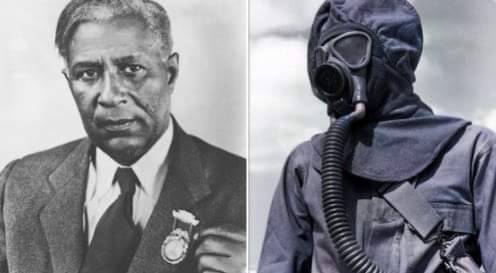
GARRETT A. MORGAN
(4 Mar. 1877 [sometimes given as 1879]-27 July 1963), was an important inventor and businessman active in the affairs of Cleveland's black community. Among his most notable inventions were an early gas mask and a traffic light. Born in Paris, Ky., to Sydney and Eliza Reed, both former enslaved people, Morgan received 6 years of education before leaving home at age 14 for Cincinnati where he worked and hired a tutor to continue his education. He has long been believed to be the grandson of Confederate John Hunt Morgan, though there are no historical documents to prove this assertion, and census data makes it unlikely. He came to Cleveland on 17 June 1895. After various positions as a sewing-machine adjuster for clothing manufacturers, Morgan went into business for himself in 1907, establishing a shop on W. 6th St. to repair and sell sewing machines. In 1909 he opened a tailoring shop; with 32 employees, he manufactured suits, dresses, and coats. In 1913 he organized the G. A. Morgan Hair Refining Co. to market a hair-straightening solution he had discovered by accident in 1905. This company soon offered a complete line of hair-care products.
Morgan invented a safety helmet to protect the wearer from smoke and ammonia, introducing his "Breathing Device" in 1912, patenting it in 1914, and using it to descend into the gas-filled tunnel beneath Lake Erie to rescue workers and retrieve bodies after the Cleveland Waterworks explosion (see WATERWORKS TUNNEL DISASTERS) on 25 July 1916. Morgan established the Natl. Safety Device Co. in 1914. Morgan's other major invention, a traffic light (1923), was important in that it used a third, cautionary signal between "stop" and "go." Morgan sold his traffic light to General Electric Co. for $40,000 in 1923.
Morgan in 1920 founded the Cleveland Call, a weekly newspaper, and in 1908 helped found the CLEVELAND ASSOC. OF COLORED MEN.
20 notes
·
View notes
Text







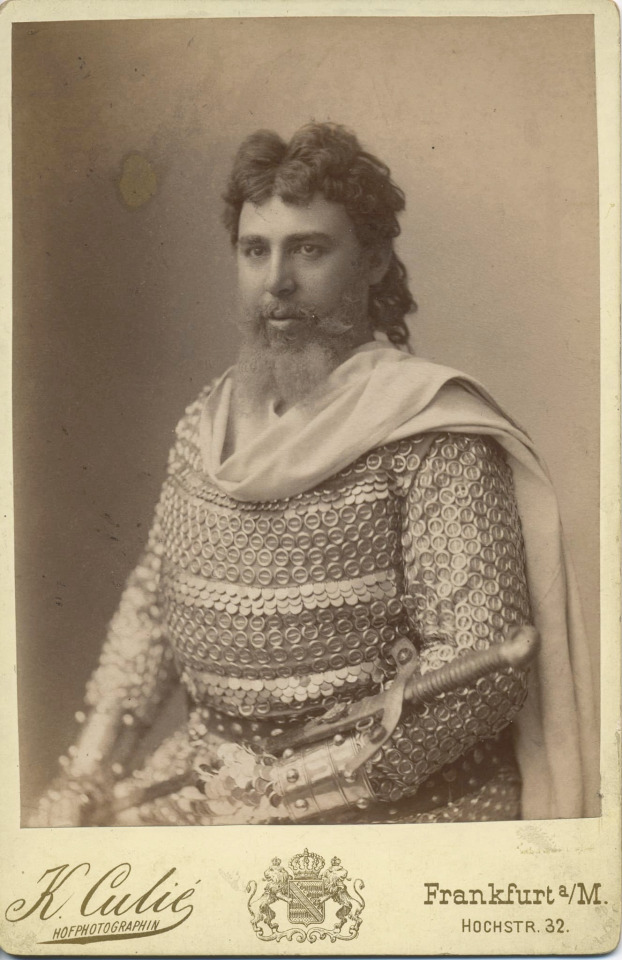





On June 10, 1865, the world premiere of "Tristan and Isolde" by R. Wagner took place in Munich.
„Isolde… wie schön…“
Here are some of the first tenors to have sung the role of Tristan over the years and contributed to the success of this work through their dedication.
Erik Schmedes (27 August 1868, in Gentofte, Denmark – 21 March 1931, in Vienna), Danish heldentenor.
Alois Pennarini (Vienna 1870 - Liberec, Czechoslovakia 1927), Austrian-Hungarian first spinto tenor then heldentenor.
Modest Menzinsky (29 April 1875 in Novosilky, Galicia - 11 December 1935 in Stockholm), Ukrainian heroic tenor.
Karl Kurz-Stolzenberg
Adolf Gröbke (May 26, 1872 Hildesheim - September 16, 1949 Epfach), German tenor.
Iwan Ershov (November 8, 1867 – November 21, 1943), Soviet and Russian dramatic tenor.
Alfred von Bary (January 18, 1873 in Valletta, Malta - September 13, 1926 in Munich), German tenor.
Alexander Bandrowsky (April 22, 1860 in Lubaczów - May 28, 1913 in Cracow), Polish Tenor.
Jacques Urlus (6 January 1867 in Hergenrath, Rhine Province – 6 June 1935 in Noordwijk, Netherlands), Dutch dramatic tenor.
Francesc Viñas (27 March 1863 – 14 July 1933), Spanish tenor.
Richard Schubert (Dessau, Germania; December 15, 1885 - Oberstaufen, Germania; October 12, 1959), German tenor.
Dr. Julius Pölzer (April 9, 1901 in Admont - February 16, 1972 in Vienna), Austrian tenor.
Giuseppe Borgatti (Cento, 17 March 1871 – Reno di Leggiuno, 18 October 1950), dramatic tenor. (with Magini-Coletti as Kurwenal)
Antonio Magini-Coletti (17 February 1855 – 21 July 1912), Italian baritone.
#opera#classical music#music history#bel canto#composer#classical composer#aria#tenor#classical studies#Tristan and Isolde#classical musician#classical musicians#musician#musicians#classical history#historian of music#history#maestro#chest voice#Tristan und Isolde#Richard Wagner#Wagner#classical singer#classical singing#opera history#music#classical
4 notes
·
View notes
Text

It's June 27, 1912.
Or is it 1980?
Elise and Richard ❤ my sweet summer children. I do believe in you Richard!
9 notes
·
View notes
Text

Loretta Lynn
April 14, 1932 - October 4, 2022
Lynn was born Loretta Webb in Butcher Hollow, Kentucky. She is the eldest daughter and second child born to Clara Marie "Clary" (Ramey; May 5, 1912 – November 24, 1981) and Melvin Theodore "Ted" Webb (June 6, 1906 – February 22, 1959). Ted was a coal miner and subsistence farmer. Lynn and her siblings are of Irish and Cherokee descent, although she is not enrolled with any Native tribe. She was named after the film star Loretta Young.
Loretta's father died at the age of 52 of black lung disease a few years after he relocated to Wabash, Indiana, with his wife and younger children.
Through her matriline, Lynn is distant cousins with country singer Patty Loveless (née Ramey). The former Miss America, Venus Ramey, who died in 2017, was also her distant cousin.
On January 10, 1948, 15-year-old Loretta Webb married Oliver Vanetta "Doolittle" Lynn (August 27, 1926 – August 22, 1996), better known as "Doolittle", "Doo", or "Mooney". They had met only a month earlier. The Lynns left Kentucky and moved to the logging community of Custer, Washington, when Loretta was seven months pregnant with the first of their six children. The happiness and heartache of her early years of marriage would help to inspire Lynn's songwriting.
Loretta and Oliver Lynn had six children together:
Betty Sue Lynn (November 26, 1948 – July 29, 2013)
Jack Benny Lynn, (December 7, 1949 – July 22, 1984)
Ernest Ray "Ernie" Lynn (born May 27, 1951)
Clara Marie "Cissie" Lynn (born April 7, 1952)
Peggy Jean and Patsy Eileen Lynn (born August 6, 1964; twin daughters named for Lynn's sister, Peggy Sue Wright, and her friend, Patsy Cline.)
Lynn's son, Jack Benny Lynn, died at age 34 on July 22, 1984, while trying to cross the Duck River at the family's ranch in Hurricane Mills, Tennessee. In 2013, Loretta's daughter, Betty Sue, died at age 64 of emphysema near Loretta's ranch in Hurricane Mills.
In 1953, Doolittle bought her a $17 Harmony guitar. She taught herself to play the instrument, and over the following three years, she worked to improve her guitar playing.
Lynn began singing in local clubs in the late 1950s. She later formed her own band, the Trailblazers, which included her brother Jay Lee Webb. Lynn won a wristwatch in a televised talent contest in Tacoma, Washington, hosted by Buck Owens. Lynn's performance was seen by Canadian Norm Burley of Zero Records, who co-founded the record company after hearing Loretta sing.
Zero Records president, Canadian Don Grashey, arranged a recording session in Hollywood, where four of Lynn's compositions were recorded, including "I'm A Honky Tonk Girl", "Whispering Sea", "Heartache Meet Mister Blues", and "New Rainbow". Her first release featured "Whispering Sea" and "I'm a Honky Tonk Girl". Lynn signed her first contract on February 2, 1960, with Zero. Her album was recorded at United Western Recorders in Hollywood, engineered by Don Blake and produced by Grashey. Musicians who played on the songs were steel guitar player Speedy West, fiddler Harold Hensely, guitarist Roy Lanham, Al Williams on bass, and Muddy Berry on drums. Lynn commented on the different sound of her first record: "Well, there is a West Coast sound that is definitely not the same as the Nashville sound. It was a shuffle with a West Coast beat".
The Lynns toured the country to promote the release to country stations, while Grashey and Del Roy took the music to KFOX in Long Beach, California. When the Lynns reached Nashville, the song was a hit, climbing to No. 14 on Billboard's Country and Western chart, and Lynn began cutting demo records for the Wilburn Brothers Publishing Company. Through the Wilburns, she secured a contract with Decca Records. The first Loretta Lynn Fan Club formed in November 1960. By the end of the year, Billboard magazine listed Lynn as the No. 4 Most Promising Country Female Artist.
Lynn's relationship with the Wilburn Brothers and her appearances on the Grand Ole Opry, beginning in 1960, helped Lynn become the No. 1 female recording artist in country music. Her contract with the Wilburn Brothers gave them the publishing rights to her material. She unsuccessfully fought the Wilburn Brothers for 30 years to regain the publishing rights to her songs after ending her business relationship with them. Lynn stopped writing music in the 1970s because of the contracts. Lynn joined the Grand Ole Opry on September 25, 1962.
Lynn credited Patsy Cline as her mentor and best friend during her early years in music. In 2010, when interviewed for Jimmy McDonough's biography of Tammy Wynette, Tammy Wynette: Tragic Country Queen, Lynn said of having best friends in Patsy and Tammy during different times: "Best friends are like husbands. You only need one at a time."
Lynn released her first Decca single, "Success", in 1962, and it went straight to No. 6, beginning a string of top 10 singles that would run throughout the 1970s. Lynn's music began to regularly hit the Top 10 after 1964 with songs such as "Before I'm Over You", which peaked at No. 4, followed by "Wine, Women and Song", which peaked at No. 3. In late 1964, she recorded a duet album with Ernest Tubb. Their lead single, "Mr. and Mrs. Used to Be", peaked within the Top 15. The pair recorded two more albums, Singin' Again (1967) and If We Put Our Heads Together (1969). In 1965, her solo career continued with three major hits, "Happy Birthday", "Blue Kentucky Girl" (later recorded and made a Top 10 hit in the 1970s by Emmylou Harris), and "The Home You're Tearing Down". Lynn's label issued two albums that year, Songs from My Heart and Blue Kentucky Girl.
Lynn's first self-penned song to crack the Top 10, 1966's "Dear Uncle Sam", was among the first recordings to recount the human costs of the Vietnam War. Her 1966 hit "You Ain't Woman Enough (To Take My Man)" made Lynn the first country female recording artist to write a No. 1 hit.
In 1967, Lynn reached No. 1 with "Don't Come Home A-Drinkin' (With Lovin' on Your Mind)", which became one of the first albums by a female country artist to reach sales of 500,000 copies.
Lynn's next album, Fist City, was released in 1968. The title track became Lynn's second No. 1 hit, as a single earlier that year, and the other single from the album, "What Kind of a Girl (Do You Think I Am)", peaked within the top 10. In 1968, her next studio album, Your Squaw Is on the Warpath, spawned two Top 5 Country hits, including the title track and "You've Just Stepped In (From Stepping Out on Me)". In 1969, her next single, "Woman of the World (Leave My World Alone)", was Lynn's third chart-topper, followed by a subsequent Top 10, "To Make a Man (Feel Like a Man)". Her song "You Ain't Woman Enough (To Take My Man)", was an instant hit and became one of Lynn's all-time most popular. Her career continued to be successful into the 1970s, especially following the success of her autobiographical hit "Coal Miner's Daughter", which peaked at No. 1 on the Billboard Country Chart in 1970. The song became her first single to chart on the Billboard Hot 100, peaking at No. 83. She had a series of singles that charted low on the Hot 100 between 1970 and 1975. The song "Coal Miner's Daughter" later served as the impetus for the bestselling autobiography (1976) and the Oscar-winning biopic, both of which share the song's title.
In 1971, Lynn began a professional partnership with Conway Twitty. As a duo, Lynn and Twitty had five consecutive No. 1 hits between 1971 and 1975, including "After the Fire Is Gone" (1971), which won them a Grammy award, "Lead Me On" (1971), "Louisiana Woman, Mississippi Man" (1973), "As Soon as I Hang Up the Phone" (1974), and "Feelins'" (1974). For four consecutive years, 1972–1975, Lynn and Twitty were named the "Vocal Duo of the Year" by the Country Music Association. The Academy of Country Music named them the "Best Vocal Duet" in 1971, 1974, 1975 and 1976. The American Music awards selected them as the "Favorite Country Duo" in 1975, 1976 and 1977. The fan-voted Music City News readers voted them the No. 1 duet every year between 1971 and 1981, inclusive. In addition to their five No. 1 singles, they had seven other Top 10 hits between 1976 and 1981.
As a solo artist, Lynn continued her success in 1971, achieving her fifth No. 1 solo hit, "One's on the Way", written by poet and songwriter Shel Silverstein. She also charted with "I Wanna Be Free", "You're Lookin' at Country" and 1972's "Here I Am Again", all released on separate albums. The next year, she became the first country star on the cover of Newsweek. In 1972, Lynn was the first woman to be nominated and win Entertainer of the Year at the CMA awards. She won the Female Vocalist of the Year and Duo of the Year with Conway Twitty, beating out George Jones and Tammy Wynette and Porter Wagoner and Dolly Parton.
In 1973, "Rated "X"" peaked at No. 1 on the Billboard Country Chart and was considered one of Lynn's most controversial hits. The following year, her next single, "Love Is the Foundation", also became a No. 1 country hit from her album of the same name. The second and last single from that album, "Hey Loretta", became a Top 5 hit. Lynn continued to reach the Top 10 until the end of the decade, including 1975's "The Pill", one of the first songs to discuss birth control. Many of Lynn's songs were autobiographical, and as a songwriter, Lynn felt no topic was off limits, as long as it was relatable to women. In 1976, she released her autobiography, Coal Miner's Daughter, with the help of writer George Vecsey. It became a No. 1 bestseller, making Lynn the first country music artist to make The New York Times Best Seller list.
In 1977, Lynn recorded I Remember Patsy, an album dedicated to her friend, singer Patsy Cline, who died in a plane crash in 1963. The album covered some of Cline's biggest hits. The two singles Lynn released from the album, "She's Got You" and "Why Can't He Be You", became hits. "She's Got You", which went to No. 1 by Cline in 1962 went to No. 1 again that year by Lynn. "Why Can't He Be You" peaked at No. 7. Lynn had her last No. 1 hit in 1978 with "Out of My Head and Back in My Bed".
In 1979, Lynn had two Top 5 hits, "I Can't Feel You Anymore" and "I've Got a Picture of Us on My Mind", from separate albums.
Devoted to her fans, Lynn told the editor of Salisbury, Maryland's newspaper the reason she signed hundreds of autographs: "These people are my fans... I'll stay here until the very last one wants my autograph. Without these people, I am nobody. I love these people." In 1979, she became the spokesperson for Procter & Gamble's Crisco Oil. Because of her dominant hold on the 1970s, Lynn was named the "Artist of the Decade" by the Academy of Country Music. She is the only woman to win this honor.
On March 5, 1980, the film Coal Miner's Daughter debuted in Nashville and soon became the No. 1 box office hit in the United States. The film starred Sissy Spacek as Loretta and Tommy Lee Jones as her husband, Doolittle "Mooney" Lynn. The film received seven Academy Award nominations, winning the Best Actress Oscar for Spacek, a gold album for the soundtrack album, a Grammy nomination for Spacek, Country Music Association and Academy of Country Music awards, and several Golden Globe awards. The 1980s featured more hits, including "Pregnant Again", "Naked in the Rain", and "Somebody Led Me Away". Lynn's last Top 10 record as a soloist was 1982's "I Lie", but her releases continued to chart until the end of the decade.
One of her last solo releases was "Heart Don't Do This to Me" (1985), which reached No. 19, her last Top 20 hit. Her 1985 album Just a Woman spawned a Top 40 hit. In 1987, Lynn lent her voice to a song on k.d. lang's album Shadowland with country stars Kitty Wells and Brenda Lee, "Honky Tonk Angels Medley". The album was certified gold and was Grammy nominated for the four women. Lynn's 1988 album Who Was That Stranger would be her last solo album for MCA, which she parted ways with in 1989. She was inducted into the Country Music Hall of Fame in 1988.
Lynn returned to the public eye in 1993 with a hit CD, the trio album Honky Tonk Angels, recorded with Dolly Parton and Tammy Wynette. The CD peaked at No. 6 on the Billboard Country charts and No. 42 on the Billboard Pop charts and charted a single with "Silver Threads and Golden Needles". The album sold more than 800,000 copies and was certified gold in the United States and Canada. The trio was nominated for Grammy and Country Music Association awards. Lynn released a three-CD boxed set chronicling her career on MCA Records. In 1995, she taped a seven-week series on the Nashville Network (TNN), Loretta Lynn & Friends.
In 1995, Loretta was presented with the Pioneer Award at the 30th Academy of Country Music Awards. In 1996, Lynn's husband, Oliver Vanetta "Doolittle" Lynn, died five days short of his 70th birthday. In 2000, Lynn released her first album in several years, Still Country, in which she included "I Can't Hear the Music", a tribute song to her late husband. She released her first new single in more than 10 years from the album, "Country in My Genes". The single charted on the Billboard Country singles chart and made Lynn the first woman in country music to chart singles in five decades. In 2002, Lynn published her second autobiography, Still Woman Enough, and it became her second New York Times Best Seller, peaking in the top 10. In 2004, she published a cookbook, You're Cookin' It Country.
In 2004, Lynn released Van Lear Rose, the second album on which Lynn either wrote or co-wrote every song. The album was produced by Jack White of The White Stripes, and featured guitar work and backup vocals by White. Her collaboration with White garnered Lynn high praise in magazines that specialize in mainstream and alternative rock music, such as Spin and Blender. Rolling Stone voted the album the second best of 2004. It won the Grammy Award for Best Country Album of the Year.
Late in 2010, Sony Music released a new album, titled Coal Miner's Daughter: A Tribute to Loretta Lynn, featuring stars like Reba McEntire, Faith Hill, Paramore, and Carrie Underwood performing Loretta's classic hits spanning 50 years. The CD produced a Top 10 music video hit on GAC of the single, "Coal Miner's Daughter", that Lynn recorded with Miranda Lambert and Sheryl Crow. The single cracked the Billboard singles chart, making Lynn the only female country artist to chart in six decades. Lynn performed at the Nelsonville Music Festival in Nelsonville, Ohio in May 2010. Lynn also performed at the Bonnaroo Music and Arts Festival on June 11, 2011. In 2012, Lynn published her third autobiography, Honky Tonk Girl: My Life in Lyrics. She contributed "Take Your Gun and Go, John" to Divided & United: Songs of the Civil War, released on November 5, 2013.
In November 2015, Lynn announced a March 2016 release: Full Circle, featuring Willie Nelson and Elvis Costello. The recording became Lynn's 40th album to make the Top 10 on Billboard's best selling country list and her album debuted at No. 19 on the Billboard Hot 200. The recording is combination of new songs and classics, and includes duets with Elvis Costello and Willie Nelson. Lynn's Christmas album White Christmas Blue was released in October 2016. In December of the same year, Full Circle was nominated for Country Album of the Year for the 59th Annual Grammy Awards.
Lynn's album Wouldn't It Be Great, the third album of her five-album deal with Legacy Recordings, was released in September 2018 after being delayed by health issues. Her health prompted Lynn to cancel all 2017 scheduled tour dates. Lynn was named Artist of a Lifetime by CMT in 2018. On October 19, 2019, Lifetime aired the highly anticipated movie Patsy & Loretta which highlighted the friendship of Lynn and Patsy Cline. Lynn attended the Nashville release of the film.
On March 19, 2021, Lynn released her 50th studio album Still Woman Enough, the fourth album of her deal with Legacy (and to come from the cash cabin recording sessions). It features Carrie Underwood and Reba McEntire on the title track alongside original tracks and duets with Tanya Tucker and Margo Price on re-recordings of "You Ain't Woman Enough" and "One's on the Way" respectively.
Lynn owned a ranch in Hurricane Mills, Tennessee, known as Loretta Lynn's Ranch. Billed as "the Seventh Largest Attraction in Tennessee", it features a recording studio, museums, lodging, restaurants and western stores. Traditionally, three holiday concerts are hosted annually at the ranch, Memorial Day Weekend, Fourth of July Weekend, and Labor Day Weekend.
Since 1982, the ranch has hosted Loretta Lynn's Amateur Championship motocross race, the largest amateur motocross race of its kind. The ranch also hosts GNCC Racing events. The centerpiece of the ranch is its large plantation home which Lynn once resided in with her husband and children. She hasn't lived in the antebellum mansion in more than 30 years. Lynn regularly greeted fans who were touring the plantation house. Also featured on the property is a replica of the cabin in which Lynn grew up in Butcher Hollow, Kentucky.
Loretta died peacefully in her sleep on October 4, 2022.
3 notes
·
View notes
Text


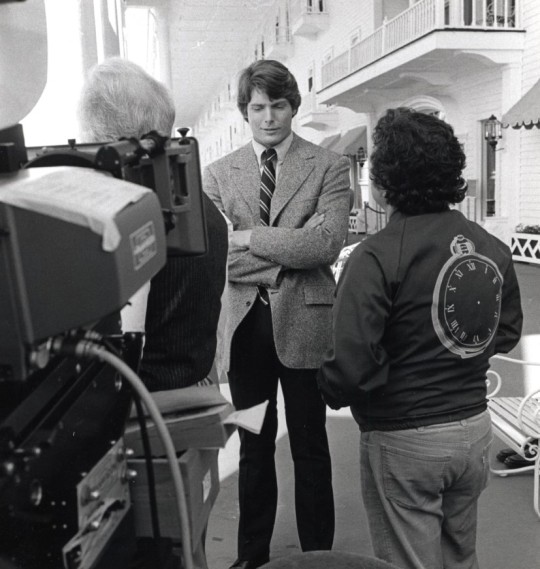
"You are lying in your bed in the Grand Hotel and it is 6:00 p.m. on the evening of June 27, 1912." Who remembers Richard, played by Christopher Reeve, listening to this recording in the movie Somewhere in Time?
June 27, 1912
#somewhere in time#christopher reeve#Grand Hotel#Mackinac Island#time travel#I love this film so much
3 notes
·
View notes
Text
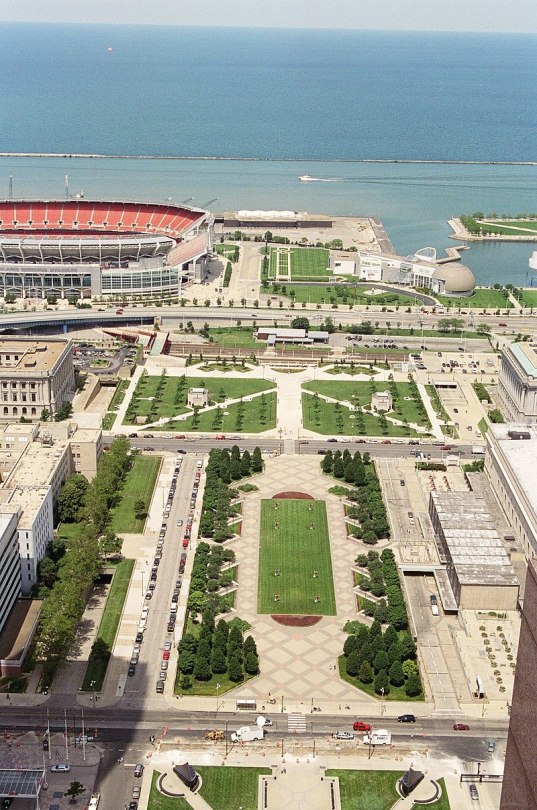


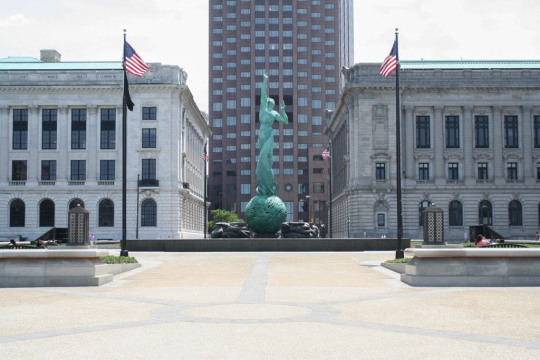

Cleveland Mall
Lakeside Ave. E.
Cleveland, OH 44114
The Cleveland Mall, a roughly T-shaped mall area between E. 9th and W. 3rd Sts., is a landscaped public park in downtown Cleveland, Ohio. One of the most complete examples of City Beautiful design in the United States, the park is a historic site listed on the National Register of Historic Places. The Mall was conceived as part of the 1903 Group Plan by Daniel Burnham, John Carrère, and Arnold Brunner as a vast public space flanked by the city's major civic and governmental buildings, all built in the neoclassical style. Many of those buildings were built over the following three decades, including the Metzenbaum Courthouse (1910), Cuyahoga County Courthouse (1912), Cleveland City Hall (1916), Public Auditorium (1922), the Cleveland Public Library main building (1925), and the Cleveland Public Schools Board of Education building (1931). Other buildings include Key Tower, the Global Center for Health Innovation, the Hilton Cleveland Downtown Hotel, and the Federal Reserve Bank of Cleveland.
In the spirit of the City Beautiful movement, formerly seedy areas were transformed into a "magnificent civic center," which was supposed to be crowned by the Union Terminal at the north end of the mall, on the shores of Lake Erie. However, the location of the station was eventually moved south and west, to Public Square, where it was finally born as the Terminal Tower. Even though the plan was never fully carried out, it was one of the few City Beautiful plans to be realized to a large extent, and remains one of the most complete examples in the country. The Mall is divided into three sections, known as Malls A, B, and C. Mall A, the southernmost, is officially named Veterans' Memorial Plaza, and Mall C was dedicated as Strawbridge Plaza in 2003. The Memorial Plaza, between Rockwell and St. Clair Avenues, is the site of Marshall Fredericks' Fountain of Eternal Life, also known as the War Memorial Fountain. The Cleveland Convention Center was built underneath Malls B and C in 1964. The Mall was added to the National Register of Historic Places on June 10, 1975.
Cleveland Public Art sponsored a series of temporary public art installations on Mall B. In 2004, New York artist Brian Tolle installed For the gentle wind doth move Silently, invisibly. The work featured eight nine-foot-tall styrofoam neoclassical urns standing atop pedestals, warped to reflect actual wind data collected from Lake Erie. The sculptures were taken down in 2006. In May 2008, Peter North and Alissa North of North Design Office in Toronto installed a work titled The Verdant Walk. It featured plantings of native grasses and seven fabric-covered sculptures. The sculptures were illuminated at night via a solar-powered LED system. They remained in place until 2010.
In 2010 the county purchased the underground convention center from the city as part of a project to completely rebuild it in conjunction with constructing the Global Center for Health Innovation and the Hilton Cleveland Downtown Hotel on the former site of the Cuyahoga County Administration Building across from Mall B. After the reconstruction of the Mall, Stephen Manka's sculpture City of Light was installed on Mall B. The illuminated steel sculpture was created for the 2013 National Senior Games. Manka described it as intended to "simulate the flames of the classic games with a wash of programmable light" and "part petal of a flower, part heavy duty turbine." The new Huntington Convention Center of Cleveland opened in 2013 and has underground connections to Public Auditorium and the Global Center for Health Innovation. The Hilton officially opened in June 2016. Mall B and Mall C reopened after construction as predominantly grassy areas, with Mall B reaching 27 feet above sidewalk level over the entrance to the Cleveland Convention Center along Lakeside Avenue.
0 notes
Text
The Journey of Living at Downton - Masterlist
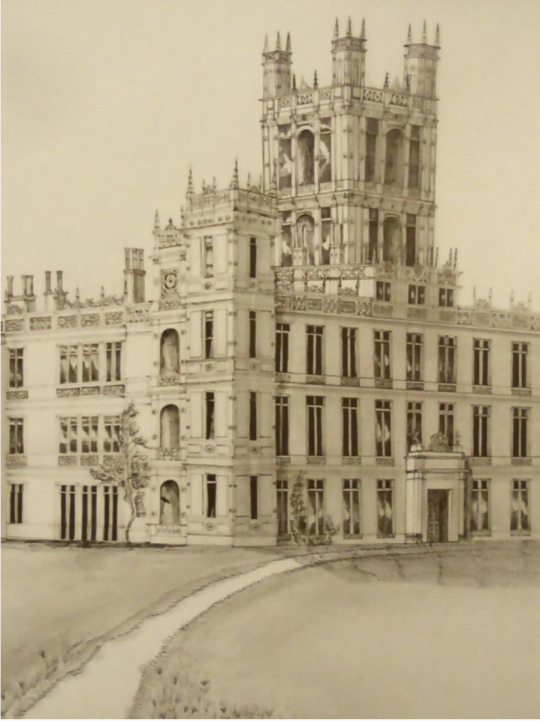
Pairing:
Tom Branson/Original Female Character
Warnings:
Major Character Death, Minor Character Death, Implied/Referenced Character Death, Period Typical Attitudes, Cannon-Typical Violence, Implied/Referenced Suicide
Summary:
Emma’s life used to be fairly normal one for someone living in England in the early 21st century, nothing peculiar but that all changed when in 2021, at 19, she woke up in the past, more specifically 1909.
Emma turned up in Yorkshire, England on a mild day (what else) in the grounds of an estate called Downton Abbey. After literally falling onto the floor right in front of said owners of the estate, the Earl and Countess of Grantham, Robert and Cora Crawley.
——
A young girl from the 21st century ends up in the world of Downton Abbey. Not a typical one where it is another Crawley sister or where she’s from a world where Downton Abbey is a TV show.
Chapters:
Chapter 1: April to Summer 1912
Chapter 2: September to October 1912
Chapter 3: April to May 1913
Chapter 4: End of May 1913
Chapter 5: July to August 1913
Chapter 6: May 1914
Chapter 7: July to August 1914
Chapter 8: Autmun 1916
Chapter 9: April 1917
Chapter 10: July to September 1917
Chapter 11: Early 1918
Chapter 12: August 1918
Chapter 13: October to November 1918
Chapter 14: February 1918
Chapter 15: April 1919
Chapter 16: April 1919 to January 1920
Chapter 17: March 1920
Chapter 18: April to Early May 1920
Chapter 19: Late May 1920
Chapter 20: Late July 1920
Chapter 21: Early August 1920
Chapter 22: Early August 1920 Continuation
Chapter 23: Mid August 1920
Chapter 24: Mid August to End of September 1920
Chapter 25: September 1921
Chapter 26: February 1922
Chapter 27: March 1922
Chapter 28: April 1922
Chapter 29: April 1922 Continuation
Chapter 30: May 1922
Chapter 31: June 1922
Chapter 32: July 1922
Chapter 33: Early August 1922
Chapter 34: May 1923
Chapter 35: February 1924
Chapter 36: February to Late April 1924
Chapter 37: Late April to Early May 1924
Chapter 38: Summer 1924
Chapter 39: September 1924
Chapter 40: Late September 1924
Chapter 41: Late September to Early October 1924
Chapter 42: Mid to Late October 1924
Chapter 43: November to December 1924
Chapter 44: January to Early May 1925
Chapter 45: Mid May 1925
Chapter 46: Mid to Late May 1925
Chapter 47: June 1925
Chapter 48: July 1925
Chapter 49: August 1925
Children of Downton - Spoilers!!!
Just a little additional post explaining when the children born during the show were born and parents. Not that important but if anyone wants to keep track, it’s here rather than sifting through chapters.
Wattpad access
fanfiction.net access
Ao3 access
#downton abbey#tom branson#tom Branson x oc#original female character#sybil crawley#sybil Crawley x oc#original male character#anna bates#anna smith#john bates#anna x bates#mary crawley#matthew crawley#mary x matthew#cora crawley#robert crawley#robert x cora#edith crawley#edith x michael#Michael gregson#Bertie Pelham#Edith x Bertie#mary x henry#henry talbot#thomas barrow#major character death#time travel
1 note
·
View note
Text

"Police Court: ROBBERY IS CHARGED, BUT TWO MEN DENY IT," Toronto Star. September 9, 1912. Page 5.
----
Malcolm McCollam, 238 Gladstone Ave., and Bert Small Held by the Police.
----
MANY ARE SENT DOWN
----
John Guthrie Tried to Stop Arrest and Got 30 Days-Young Man Wanted to Die.
----
After being released from jail on Saturday morning as a discharged vagrant, Bert Small, of Wheeling, W. Virginia, was arrested the same night on a charge of highway robbery. With him is Malcolm McCollum, of 238 Gladstone avenue, these being the two men who the police claimed attacked Eugene Latchford, of 35 Moutray street.
Both were charged in the Police Court with robbery and begging. They denied their identity, and the prosecution will not attempt to prove it until to-morrow.
Obstructed the Police.
From the way John Guthrie approached Constable Davis while the latter was making an arrest, and ordered him to "hands off," Magistrate Denison got the impression that he was trying "to run things" in the north of the city. For obstruction he goes to jail for 30 days.
The father of Reginald Dodson declared the boy was but fifteen, though he looked so much more that the magistrate refused to allow him to go up to the Juvenile Court. He is the young man caught on Saturday while shoplifting in the T. Eaton store. The boy goes to jail for 10 days.
On the story that he was going to work for the Hydro-Electric, but did not, Alfred Brookman is alleged to have obtained board and lodging in the house of Mrs. Alice Clark for two weeks, by false pretences. The complaint was for $6, but beyond listening to Brookman's plea of not guilty. Magistrate Denison did not proceed with the case.
Three Years for Robbery.
Wm. Davis goes to jail for 60 days. and Wm. Dunning [pictured] to the penitentiary for three years, for robbing a store at 913 Queen west.
"Wasn't near the place," Dunning protested, "every time anything happens around there. they take me whether I'm guilty or not."
"Yes," the Crown replied "the last time you were taken with a pair of chickens in your arms."
Martin Scarrett, the man past middle-age, who was arrested on the complaint of a girl fourteen years of age, will not be tried for a week. The girl. it is claimed, is partly an imbecile. Scarrett's ball was fixed at $2,000.
The defendant, Ellen Ware, is colored, while the complainant, Benjamin Coulster, is a white youth. He told the magistrate that they met on Sherbourne street without an introduction, and that before they separated he had been robbed of $17.
"Was in Buffalo on the night he mentions," the woman protested, so more witnesses must be brought.
Five Days for Each Word.
"Hello kid," cost Franco Gaillo five days per word, unless somebody comes to his rescue with two dollars. The explanation of Interpreter Motta was that he stepped in front of two strange girls, took off his hat, and said the above words very politely. Magistrate Ellis said such was disorderly conduct, and the prisoner hadn't the two-dollar fine.
Four men brought in by Constable Hobson from Queen and Yonge last night declared they but sang on the street. The officer declared it was a motion song which jostled people off the sidewalk. They were: John Smith. Thomas Honan, Thomas James, and Joseph Anderson. The fines being a dollar and costs each or 30 days in jail.
Tried to Suicide.
Arthur W. Strickland was remanded for a week when he came before. Magistrate Denison, charged with attempting to commit suicide.
"Guilty!" said Strickland and he was remanded to have the jail doctors examine his mental condition.
[Dunning was 27, with a past jail term, worked as a boiler operator, and was convict #F-458 at Kingston Penitentiary. He was reported in June 1913 for talking, and lost all remission for that month. He was reported again in February 1914 (ten days lost remission), April 1914 (3 days in solitary) and August 1914 (ten more days lost remission). All for impertinence, quarreling and refusing to work. He was released in mid-1915.]
#toronto#police court#robbery with violence#highway robbery#vagrants#the vagrant as criminal#false pretences#fraud#resisting the police#disorderly conduct#attempted suicide#sentenced to prison#toronto jail#sentenced to the penitentiary#kingston penitentiary#crime and punishment in canada#history of crime and punishment in canada
0 notes
Text

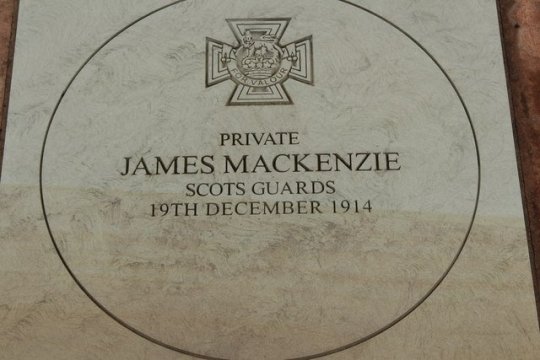
On December 19th 1914 Private James MacKenzie of the Scots Guards, was killed in action at Rouges Blancs, France.
Mackenzie was born at West Glen, New Abbey, Kirkcudbrightshire on 2nd April 18849. His father was Alexander McCortie Mackenzie, a mason. His mother was Marion Carnduff nee Millar. Alexander and Marion had married on 8th June 1883 in West Glen. The family moved to Maxwelltown when James was young. He had a brother and six sisters.
James was educated at Maxwelltown School and after school was employed at Locharbank Farm at Bank End, on his maternal grandparents farm at Barncleugh, Irongray and later as a joiner with Messrs Williamson in Maxwelltown.
When he enlisted on 16th February 1912, he gave his age as 23 although he was 27, to ensure he got in, and gave his occupation as a groom. He went to France with his unit, the 2nd Battalion, Scots Guards, arriving on 7th October 1914.
On 19th December 1914 at Rouges Blancs, France, Private MacKenzie rescued a severely wounded man from the front of the German trenches under a very heavy fire and after a stretcher party had been compelled to abandon the attempt. Private MacKenzie was killed later on that day while trying to carry out a similar act.
Sadly, Mackenzie’s body was not recovered following the action at Rouges Blancs, and he is commemorated on the Ploegsteert Memorial, Belgium. James had never married and the VC was sent to his mother on 9th March 1915. In addition to his VC, he was awarded the 1914 Star with Mons clasp, British War Medal 1914-20 and Victory Medal 1914-19. His mother later presented his medals to the Scots Guards Regiment and they are held by the Regimental HQ, Scots Guards, Wellington Barracks, London.
A memorial stone was laid in Maxwelltown in December 19th 2014 to commemorate Private MacKenzie by Dumfries and Galloway County Council.
6 notes
·
View notes
Text
Throwback: When a section of the industry speculated that Hrithik Roshan’s Kaho Naa Pyaar Hai and Aamir Khan’s Mann were based on Titanic
The much-loved Kaho Naa Pyaar Hai completed 24 years yesterday. It was released in cinemas on January 14, 2000, and was the biggest hit of that year. Debutant Hrithik Roshan became a superstar overnight and continues to rule even today. Though the actress opposite him, Ameesha Patel, was also a newcomer, the film was in the news even before its release. In fact, more than 25 years ago, there were even rumours that the Rakesh Roshan-directorial is based on the Hollywood blockbuster, Titanic (1997)!

This interesting bit of information was mentioned in Komal Nahta’s magazine Film Information dated June 27, 1998. It mentioned that as per rumours in the film industry, not just Kaho Naa Pyaar Hai but also Aamir Khan-Manisha Koirala starrer Mann (1999) was Titanic’s remake. The article debunked the myth and also said that the only similarity between the Hindi films and Titanic was that they were being shot aboard a ship. Since Titanic was also set on a ship, probably some people put two and two together and spread the speculation.
A major section of Kaho Naa Pyaar Hai was set on a ship in the first half. The film was the story of Rohit (Hrithik Roshan) and Sonia (Ameesha Patel) who meet in Mumbai and later on a cruise ship. Due to an interesting turn of events, both are stranded on an island where they fall in love. In an interview to Komal Nahta’s Film Information magazine dated December 5, 1998, Rakesh Roshan spoke in detail about why he chose the Star Clipper ship of the USA and the challenges he faced in shooting on board and taking the aerial shots mid-sea. Bollywood Hungama published excerpts of this interview on January 14.
Mann, meanwhile, directed by Indra Kumar was about Dev (Aamir Khan) and Priya (Manisha Koirala). Both meet each other on a cruise and though they were engaged to their respective partners, sparks flew between them. The musical entertainer was shot on Sun Cruises in Singapore.
As for Titanic, it was directed by James Cameron and told the story of Jack (Leonardo DiCaprio), a poor artist and his love affair with Rose (Kate Winslet) aboard an ill-fated ship in 1912. It was based on accounts of the sinking of RMS Titanic though it was also extensively fictionalized. The disaster film was a blockbuster across the world. In India, it stunned one and all as it did exceedingly well despite not being dubbed in Hindi for almost a year.
As per the Film Information issue dated August 22, 1998, Titanic was the first ever English film to have completed 25 weeks in more than 10 centres in India. It recorded footfalls of nearly 2.5 crores which is higher than many of the big hits of today. The report stated, “It has also been the first English film to have run to full houses for its first 10 weeks. What is more remarkable is the fact that Titanic achieved such a huge success despite having only 86 prints in circulation, and all in the original (English) version! In fact, the collections of Titanic in India are the fourth highest in the whole of Asia, after Japan, South Korea and Taiwan.”
#Aamir Khan#Ameesha Patel#Down The Memory Lane#Features#Flashback#Hollywood#Hrithik Roshan#Indra Kumar#International#James Cameron#Kaho Naa Pyaar Hai#Kate Winslet#Leonardo DiCaprio#Manisha Koirala#Mann#Rakesh Roshan#Throwback#Titanic#bollywood hungama
1 note
·
View note